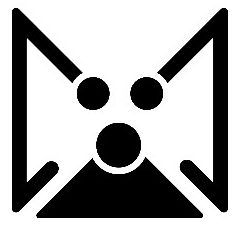
The Fundamental Unit Theory of Reality unifies scientific concepts into a single, coherent model of reality. It suggests that our universe can be seen as a computer program, as detailed below.
This theory proposes that reality consists of approximately 10^110 mathematically identical fundamental units, which are linked to a coordinate system. The photon traveling through space is the closest current scientific analogy for these units, while the coordinate system resembles space itself.
The fundamental units move in unison, covering one unit of distance at a time. Their locations and directions are the only distinguishing factors. Reality emerges from the repeated, coordinated movement of these units.
To determine the next position of a fundamental unit, several factors must be considered:
- A unit’s direction remains constant unless affected by another unit’s location, similar to Newton’s First Law for objects in motion.
- A unit’s position can influence other units’ directions in two ways:
- *Each unit causes other units to shift their direction slightly towards itself. The effect depends on the distance between them. This phenomenon results in what we know as gravity. A more detailed model to explain this is needed.
- When two units occupy the same coordinate, their directions become equal and opposite, as described by Newton’s Third Law. A more specific model for this interaction is needed, but envisioning two colliding pool balls on a frictionless table may help.
The final direction of a unit results from the cumulative impact of all other units. Each unit is centered in its corresponding “coordinate in space” during each movement iteration. Although the true nature of this system remains unknown, we can represent each unit as a shaded sphere for conceptual purposes.
As the coordinate system of space is unclear, we can use X, Y, Z axes to describe each unit’s position. To simplify, we can round the direction of movement to the nearest degree out of 360. Thus, when a unit moves one distance unit, it can end up in one of 129,600 possible locations (360*360).
Reality is the iterative outcome of these fundamental units following this process. In this model, units appear to travel at the speed of light. Time can be seen as a single iteration of the model, with each moment representing a fundamental unit of time. This helps us understand that time is not infinite in either direction, but begins when the program starts and continues as the program runs. This concept aligns with our understanding of the fourth dimension, enabling us to view time and the fourth dimension as one and the same.
This theory does not claim that nothing is smaller than these fundamental units of reality. Whether that is true or not is beyond the scope of this theory.
*The alteration in trajectory could be determined using a variation of Newton’s formula, F=G*(m1*m2/r^2). However, instead of computing force, our focus would shift to quantifying the deviation from the prior movement direction. We would also need to adjust the formula to account for these being identical units always in motion as opposed to masses of varying size.